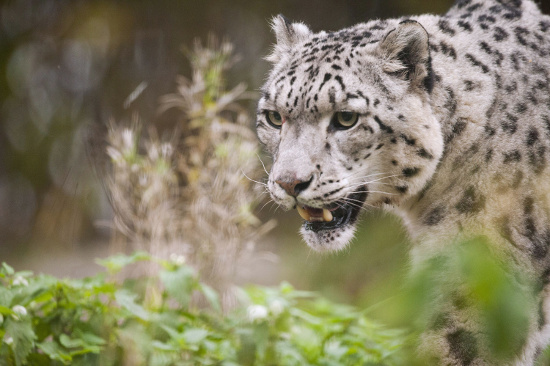Nepal defeated the leopard who had eaten a dozen people
Nepalese hunters shot and killed a leopard which was the terrors of the people in the area eating more than a dozen people last year in the country's remote western region.
Lal Bahadur Saud, Baitadi district police director in Bangladesh, told AFP that the leopard was locked in a barn by the villagers in the middle of the night and he quickly reported the incident to the local hunters. The hunters drilled a hole into the one-story house and shot the leopard.
"The villagers told us that the cannibalistic leopard has a white spot on the chest. We have seen signs of death as well. We believe we have defeated it," Saud said.

The newspaper community in Nepal has increased in the past 2 decades.(Source: WWF / AFP)
In November, local authorities opened a hunt for the leopard, the culprit spreading horribly to many villages located along the banks of the Mahakali River.
The police suspended 25,000 rupees ($ 300) for anyone who could catch the animal, dead or alive, after 100 police officers and soldiers could not catch it.
"In the last Wednesday, we had 20 police come near the place where the leopard was found. Local people were very afraid to leave the house at night. But now they could breathe a sigh of relief," - Saud said. . It is known that the attacks occurred in a mountainous area, sparsely populated and forest covered, divided around a dozen villages.
The International Union for Nature Conservation has included newspapers on the list of "near extinction" species . Experts say that this animal community has declined sharply because of poaching.
Among Nepal's three newspapers, snow leopards are often found in hilly areas, while the common and cloudy newspapers live in near-equatorial areas or in hilly areas with forest cover.
According to Mangal Man Shakya, chairman of Kathmandu-based Wildlife Monitoring Group, Nepal has not yet conducted a national scale survey of leopard species.
But he said that some small surveys show that the newspaper community has increased over the past two decades, thanks to conservation efforts and the gradual re-growth of forests.
- Interesting facts about Nepal
- 1,000 missing Europeans in Nepal after the earthquake
- Landslides in Nepal, at least 41 people died
- Nearly 2,500 people died of earthquake, Nepal chaos
- The valley in Nepal is 80 cm tall after the earthquake
- Use debris from Nepal earthquake to build a house
- The earth 'stirred' under the influence of the earthquake in Nepal
- Four new earthquake quakes shook Nepal
- Floods, serious landslides in Nepal cause great casualties
- Why is Nepal continuing to suffer from earthquakes?
- The first time the pink newspaper was discovered
- More than 5,000 people died from earthquakes, Nepalese people resented rescue
 Animal 'suffering' after hibernation
Animal 'suffering' after hibernation Why do goats climb well?
Why do goats climb well? Scientists were surprised to see chimpanzees eating turtles
Scientists were surprised to see chimpanzees eating turtles Giant catfish died deadly due to drought in Thailand
Giant catfish died deadly due to drought in Thailand